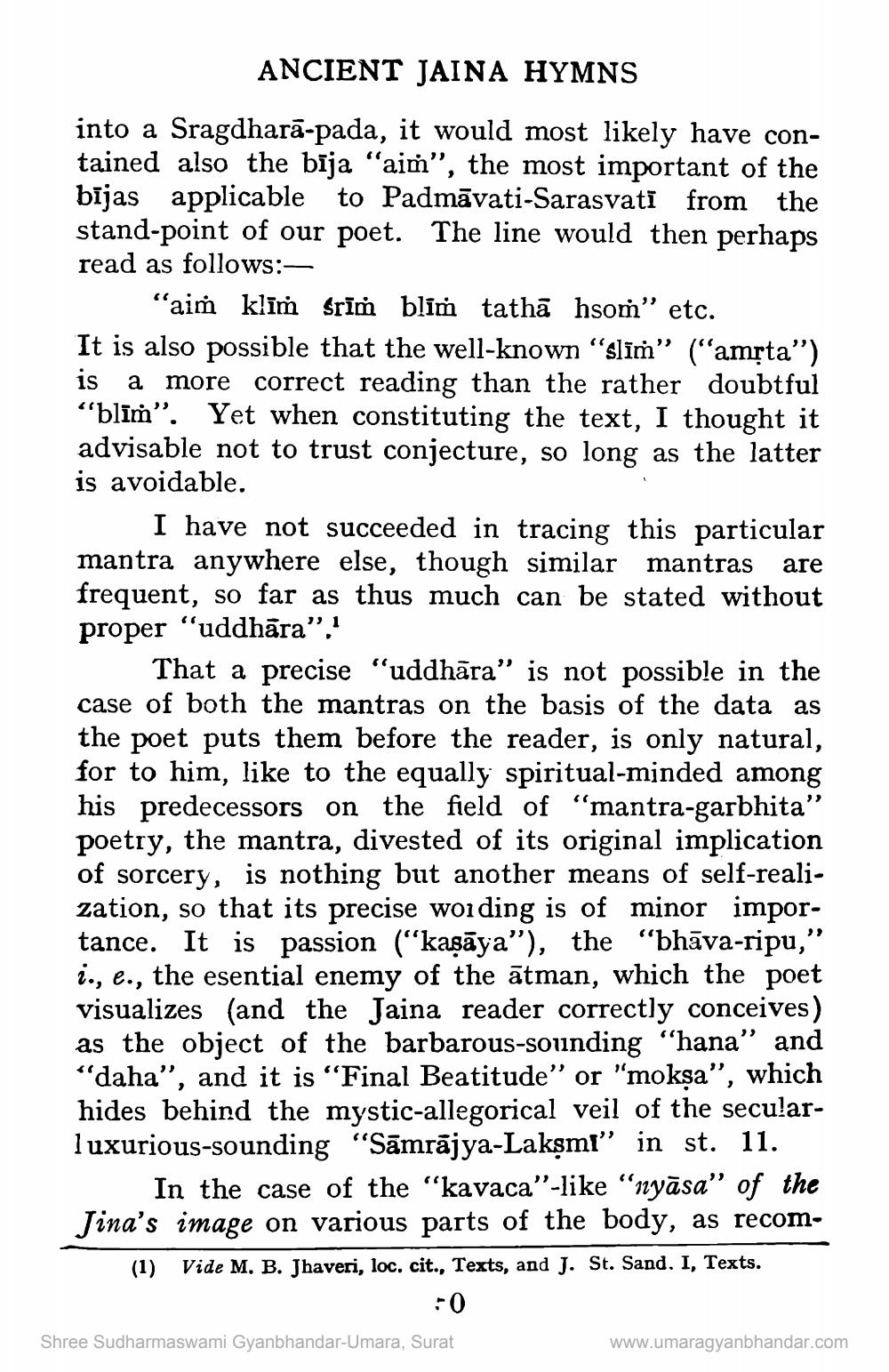________________
ANCIENT JAINA HYMNS
into a Sragdharā-pada, it would most likely have contained also the bīja "aim”, the most important of the bījas applicable to Padmāvati-Sarasvati from the stand-point of our poet. The line would then perhaps read as follows:
"aim klīm śrīm blím tathā hsom” etc. It is also possible that the well-known "slim" ("amsta") is a more correct reading than the rather doubtful “blīm”. Yet when constituting the text, I thought it advisable not to trust conjecture, so long as the latter is avoidable.
I have not succeeded in tracing this particular mantra anywhere else, though similar mantras are frequent, so far as thus much can be stated without proper "uddhāra”,
That a precise "uddhāra" is not possible in the case of both the mantras on the basis of the data as the poet puts them before the reader, is only natural, for to him, like to the equally spiritual-minded among his predecessors on the field of "mantra-garbhita" poetry, the mantra, divested of its original implication of sorcery, is nothing but another means of self-realization, so that its precise woi ding is of minor importance. It is passion (''kasāya"), the “bhāva-ripu," i., e., the esential enemy of the ātman, which the poet visualizes (and the Jaina reader correctly conceives) as the object of the barbarous-sounding “hana” and “daha”, and it is "Final Beatitude" or "mokşa”, which hides behind the mystic-allegorical veil of the secularluxurious-sounding "Sāmrājya-Lakşmi” in st. 11.
In the case of the "kavaca"-like "yāsa” of the Jina's image on various parts of the body, as recom(1) Vide M. B. Jhaveri, loc. cit., Texts, and J. St. Sand. I, Texts.
-0
Shree Sudharmaswami Gyanbhandar-Umara, Surat
www.umaragyanbhandar.com




